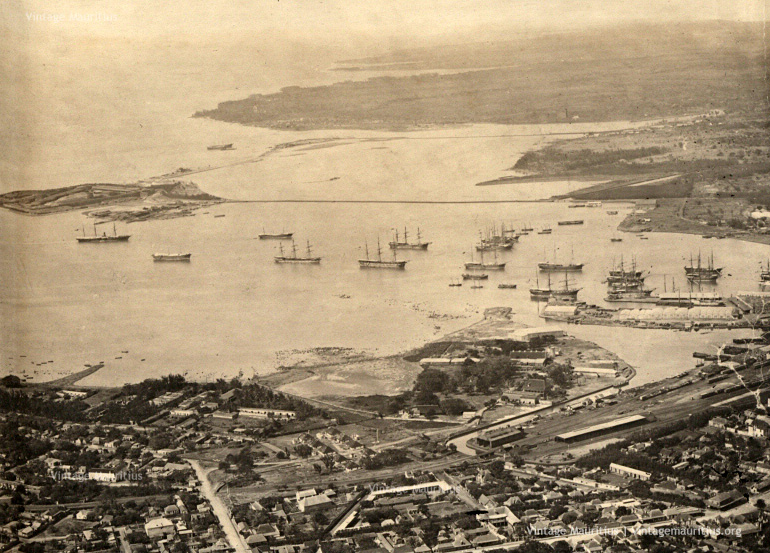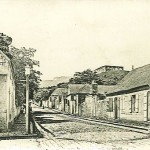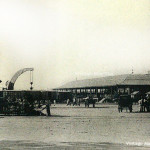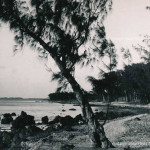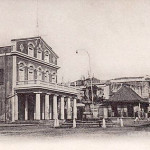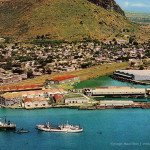Converting the primitive harbour that the first French settlers knew into a civilized port, was no mean achievement for Mahé de La Bourdonnais. That metamorphosis was the result of the joint efforts of European sailors, Lascar seamen from India and African slaves.
A navigable channel was marked out to facilitate the entrance of ships in the harbour. Ships could even enter the harbour at night, guided by a beacon burning on the top of the Morne de la Découverte, now Signal Mountain.
A sheltered place for careening ships, was developed behind a causeway that linked Tonneliers island to the mainland. A fort, La Redoute La Bourdonnais, was built on Tonneliers island to guard the port. To the right of the sheltered port was a little creek which was widened to serve as a dock, called the Small-Boat Dock. The boat yard was soon operational and small open boats of various kinds were built at first, then a host of more complex sea-vessels: a decked lighter for unloading ships, two barges for carrying sand and ballast, and a third for bringing water to fill the ships’ water casks, a second lighter for carrying firewood, a furnace-lighter to heat the pitch used for ships and lastly a craft to be used for dredging away the silt from the harbour. When timber from the island forests became available, the dock-yard began building ships with several decks. Four such ships were completed in 1737 among which La Créole and Le Nécessaire (150 tons), L’Utile (250 tons), and a large number of ships were docked for complete repairs, the most important of which were La Subtile, La Légere, L’Hirondelle, La Thétis and La Paix.
Further progress was recorded in harbour works coming from all corners of the world, Europe and in the 1780s under the able guidance of the Chevalier de Tromelin, a distinguished naval engineer. Trou Fanfaron was converted into a harbour capable of accommodating a squadron of six ships of the line and several frigates. The Imperial Government under Decaen contributed as well to the improvement of the port by undertaking important dredging works in the harbour and developing the west side of the harbour where Piston, Rondeaux and Monneron created shipyards.
Milbert, who visited the island at the beginning of the 19th century during a peaceful period (Peace of Amiens), witnessed a port full of ships coming from all corners of the world, Europe and Africa, America and Asia, and loaded with an infinite variety of goods. He was marvelled by the forest of masts and flags that literally covered the seaport and brought Port Louis on a par, in terms of activity and luxury, with the richest ports of France. The number of ships entering Port Louis harbour nearly trebled during the last decades of the 18th century, rising from 101 in 1771 to 347 in 1803.
The resumption of hostilities between the British and the French in 1803 and the ensuing British blockade had no adverse effects on Port Louis port of call and a trading platform. Between 1805 and 1809, the number of ships calling in the harbour, 444 in all, was three times the number recorded for the comparative period between 1799 and 1803.
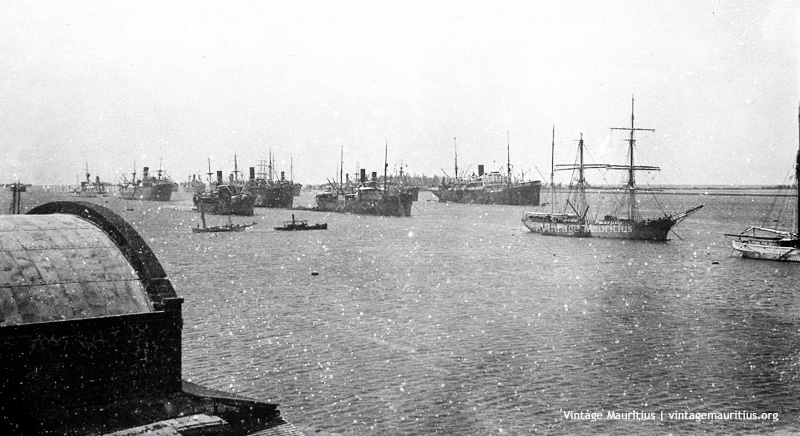
Port Louis Harbour – Steam and Sail Ships – 1905 (Courtesy: Taylor Smith families)
Port Louis soon became the most important shipping centre of the Indian Ocean. In 1851 a British traveller, Dr Frederick J.Mouat, noted that the port was extraordinarily busy whereas in 1865 a French visitor, L.Simonin, observed that very few places could be compared to Port Louis in liveliness and activity, especially in the enormous quantity of goods which were landed and sold there. That year 715 ships entered the port although this was below the peak of 852 recorded in 1858. This period of prosperity coincided with the extension of the quays, the provision of dry-docks and slipways. Thus, the Mauritius Dock was created in 1857, the Stevenson Dry Dock in 1859 and the Albion Dock in 1860. The Mauritius Dock was restyled the New Mauritius Dock in 1876.
After the opening of the Suez Canal and the end of the age of sail, the importance of Port Louis as a port of call began to dwindle. Shipping movements show a steady decline to the dramatic figure of 136 arrivals in 1918, with hardly any foreign steamship line calling, although Mauritius was connected to Africa and Europe through such lines as the Castle line, the Clan line, the Union Castle line and the Messageries Maritimes. This decline can be verified in the regular fall in the tonnage handled in the second decade of the twentieth century: from 986000 tons in 1910 down to 684000 tons in 1919. However, the critical factor was that the harbour installations of Port Louis, which had been constructed with sailing-ships in mind, were unsuitable for steamers.
Fortunately, after the First World War, vigorous measures were taken to overhaul the harbour facilities accordingly. Intensive dredging and the widening of the entry channel offered a larger number of buoy-berths. This was followed by the construction of new quays A,B,C and D which was undertaken in the Peninsular Area to facilitate the movement of steamers in the harbour.
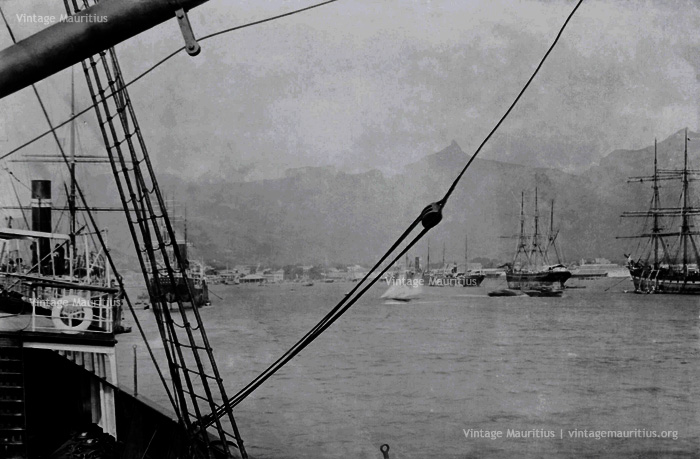
View of Port Louis Harbour – 1888 (Courtesy: Taylor Smith)

